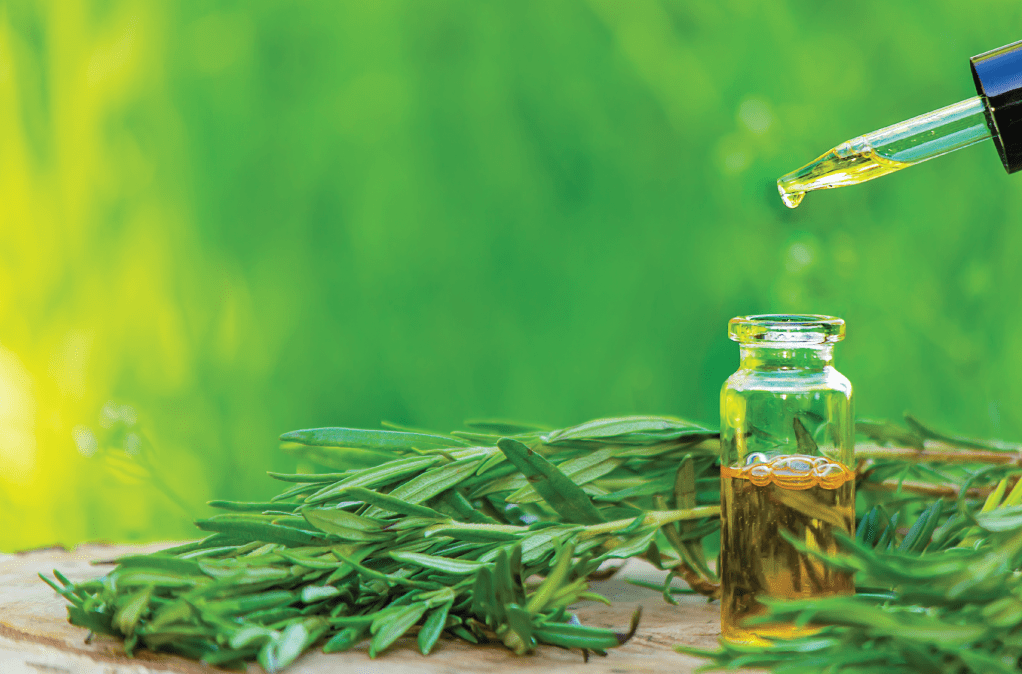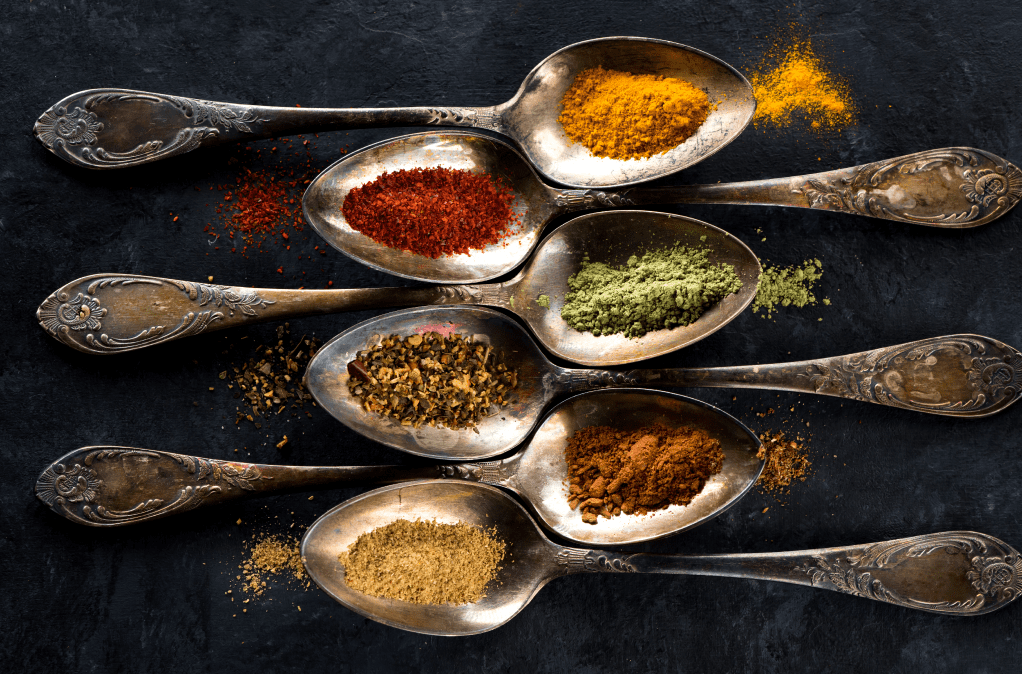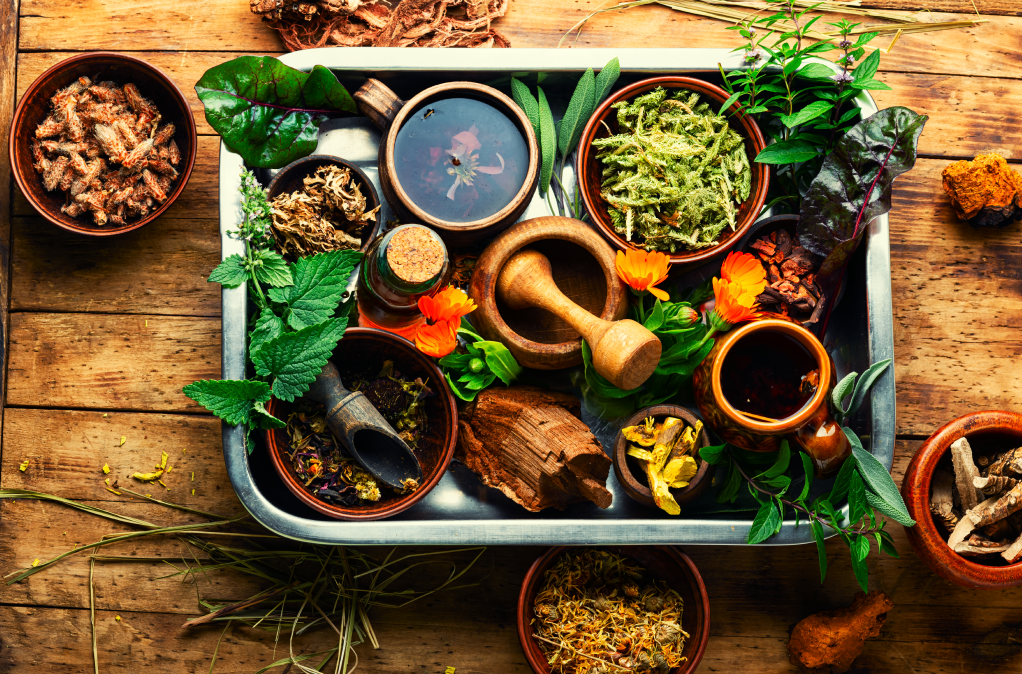Table of Contents
Traditional medicines have been gaining popularity in the developed world in recent years, as many people are turning to plant medicine due to the side effects of modern drugs. Furthermore, many chronic diseases persist in the population despite the efforts of conventional medicine to cure them. Scientists and pharmaceutical companies are also turning their focus to traditional medicines as more conventional Western drugs take years of research and development to produce and are also very costly. [This article, “7 Great natural Folk Remedies That Really Work” was originally published in
NewsHealthWatch]
The basic approach to care is a fundamental distinction between traditional and conventional modern medicine. While conventional Western medicine uses a systemic approach that focuses on treating the symptoms of disease, proponents of traditional medicines embrace a holistic approach to healing, considering mind, body, and spirit. Traditional medicine also places a greater focus on preventive care, an aspect that is underemphasized in conventional medicine. Finally, conventional medicine typically uses a single drug to treat a single disease symptom. In contrast, the plants used in traditional medicine contain multiple active compounds that act on multiple body systems.
As it is, approximately 40% of modern drugs are derived from traditional sources, and this number is only growing. Most notably, the use of chloroquine as an antimalarial originated in traditional medicine. However, most pharmaceuticals are synthetic compounds, as scientists have found it easier to synthesize more potent versions of plant compounds used in traditional medicines. These synthetic compounds often produce harmful side effects. Sometimes called ‘folk remedies,’ plant-based medicines based on the age-old wisdom of indigenous peoples worldwide show considerable promise for a range of modern health concerns with fewer side effects.
Traditional medicine goes beyond human evolution
While natural folk remedies are now experiencing a surge in popularity in the developed world, these traditional medicines have long been the foundation of medical treatment in the developing world. It is estimated that 80% of people worldwide use traditional medicine as a primary source of care. Some traditional medicines include: traditional Chinese medicine, traditional Korean medicine, Ayurveda, traditional African medicine, and traditional Iranian medicine. Traditional medicine uses more than 53,000 species of plants, and plants and plant-derived ingredients are a major component of traditional treatments. A great wealth of medical knowledge is still to be mined from the rich indigenous cultures that exist worldwide.
The first written record of herbal remedies dates back 5,000 years to the ancient Sumerians; however, archaeological studies have revealed that plant medicine in human cultures dates back at least 60,000 years. Plant-based medicine may transcend even human evolutionary history, expanding to animal populations. Research on chimpanzees in recent decades has revealed that these non-human primates are adept at selecting plants for medicinal purposes. For example, chimpanzees have been observed removing the bark and leaves of a Vernonia amygdalina plant, then chewing the inner pith to treat intestinal parasites.
Scientists believe that our Paleolithic ancestors carried an equivalent level of expertise with regard to plants as medicine, and at times they may have gained some expertise by copying animals. So it is believed that the vast knowledge of plant medicine contained in traditional medicines stretches deep into our evolutionary past. Moreover, as contemporary humans are genetically almost identical to Paleolithic Homo sapiens, we are well suited for the same plant-based remedies that our ancient ancestors used. Keep reading to discover some plant-based folk remedies that have stood the test of time.

Bitter melon: a traditional diabetes remedy
Bitten melon, also called Momordica charantia, is a plant common to Asia, South America, East Africa, and the Caribbean, and it gets its name from its bitter taste. Thought to have insulin-like properties, bitter melon may help to lower blood sugar as it draws glucose into cells. This helpful plant may also help to lower blood sugar by blocking the conversion of nutrients to glucose, allowing less sugar into the bloodstream. Bitter melon has an appearance and taste similar to that of a cucumber. It has been used to treat a range of medical conditions, including diabetes, constipation, and respiratory conditions. The fruit of this plant has been used to treat diabetes among indigenous populations in Asia, East Africa, South America, and India.
Conventional diabetes medications, such as Metformin, are designed to increase insulin sensitivity and to decrease glucose production in the liver; however, many type 2 diabetes patients do not respond to these medications, or they may develop side effects such as liver damage or heart failure. About 28% of type 2 diabetes patients eventually require insulin therapy. A 2011 study of diabetic patients administered 500-2,000 mg bitter melon per day showed a “modest hypoglycemic effect” that was less than 1,000 mg Metformin per day. Bitter melon has also been investigated for its cholesterol lowering, anti-inflammation, antiviral, and anticancer effects.
Medicine Man Plant Co. is at the forefront of the plant-based medicine movement, reaching into our evolutionary past for effective home remedies to our most basic health issues. This Houston-based supplement company, founded in 2020, offers a product called “The Blood Sugar Pill” which contains a helpful blend of bitter melon extract, aloe vera powder, and holy basil. Co-Founder Dr. Mark “Merriwether” Vorderbruggen formulated this blend to act synergistically for optimum blood sugar control.
Calendula can heal your gut (Folk Remedies Today)
Also called pot marigold, the calendula plant is in the same family as the marigold, and it grows in Southeastern Asia, Western Europe, and the Mediterranean. With antifungal and antimicrobial properties, tea made from the Calendula officinalis plant may be applied externally to wounds or consumed as a beverage to heal mouth, throat, or digestive tract tissues. Calendula is used traditionally for wound healing, and it is known to heal inflammation of the gut wall. In addition, the oils and acids of the plant have been shown to fight pathogens, candida, and antibiotic-resistant bacteria, proving beneficial to the gut from multiple angles. Potent flavonoids in calendula protect cells from free radical damage and give this plant its valuable anti-inflammatory properties. Calendula has been used in traditional medicines to treat stomach upset, ulcers, and menstrual cramps. It has also been used to treat gastroesophageal reflux disease (GERD) and inflammatory bowel disease (IBD). This home remedy is generally safe with few side effects.
Ashwagandha: the power of a horse
Ashwagandha is an evergreen shrub found naturally in India, the Middle East, and Africa. Also known as Indian ginseng or winter cherry, the roots and orange-red fruit have been used as medicine for centuries. In Ayurveda, ashwagandha is known as a Rasayana, an herb that promotes youth and happiness. Said to give the power of a horse (“ashwa”) when consumed, ashwagandha has been used to treat emaciation in children and frailty in old age. Ashwagandha is sometimes used traditionally in combination with other drugs for snake venom or scorpion sting. Most notably, this traditional remedy has been used to relieve stress and anxiety. A 2019 study of people taking 250 mg or 600 mg ashwagandha per day showed reduced stress levels and lowered cortisol. In other studies, the anti-anxiety effect of this plant-based remedy has been comparable to Lorazepam treatment. (Lorazepam is a benzodiazepine and a common anti-anxiety drug.) Due to its antioxidant properties, ashwagandha may have a neuroprotective effect. It has been shown to improve memory and cognition in patients with neurodegenerative diseases such as Alzheimer’s disease and Parkinson’s disease. The benefits of this folk remedy may extend to effects on sleep quality, memory, and cognition. Ashwagandha’s side effects are generally mild, and may include upset stomach, nausea, and drowsiness.
Nutmeg: a natural anti-depressant
Nutmeg is a spice made from the seed inside the fruit of the Myristica fragrans tree, and it has been known for its psychoactive properties for centuries. Myristica fragrans can be found naturally in Indonesia, China, Malaysia, South America, and Sri Lanka. The psychoactive compounds in the seeds of this plant evolved for their insecticidal properties. While nutmeg may boost mood in moderate doses, high doses can cause hallucinations and loss of muscle coordination. Cases of nutmeg toxicity were reported in patients who ingested 5 grams of this common spice. The anti-depressant properties of nutmeg come from Monoamine Oxidase Inhibitors (MAOI) found naturally in the seeds. MAO Inhibitors obstruct enzymes that break down the neurotransmitters dopamine, serotonin, and norepinephrine. While higher dopamine levels improve focus and concentration, serotonin boosts mood, and norepinephrine stimulates wakefulness. Nutmeg has also been used as a stimulant, antidiarrheal, and an aphrodisiac. In addition, it has anti-inflammatory, antimicrobial, and antifungal properties. It is generally considered safe when taken by mouth in low doses.
Hawthorn for your heart
Hawthorn is a common shrub in the rose family that grows throughout the world. Its use in Chinese medicine dates back to 659 CE for the treatment of high blood pressure and heart pain. The berries of this plant have been traditionally used to treat heart problems, and modern studies have shown it to be effective. According to one study, 900 mg per day of hawthorn extract was as effective as captopril (a prescription heart medication) for symptoms of heart failure. According to a 10-week study of people with high blood pressure, hawthorn extract taken 500 mg daily reduced diastolic blood pressure. The flavonoids in this helpful plant may dilate blood vessels, protect them from damage, and improve blood flow, contributing to the heart benefits of this traditional remedy.
Hawthorn has a host of other health benefits, and it is high in antioxidants, which destroy cell-damaging free radicals. The polyphenols in this plant may lower your risk of some cancers, type 2 diabetes, asthma, and premature aging. Hawthorn has few mild side effects, including sweating, palpitations, agitation, and gastrointestinal symptoms.
Cordyceps: gold for your immune system
Cordyceps is a parasitic fungus that invades insects and other fungi. This prized mushroom has been used in traditional Chinese medicine for hundreds of years to treat respiratory diseases, liver problems, hyperglycemia, and cancer. Often called ‘Himalayan Gold’, cordyceps is farmed in the Himalayan plateaus. In its wild form, Cordyceps is the most expensive mushroom in the world, priced at up to $20,000 per kilogram, though most supplements come from synthetically produced fungi.
Cordyceps has also been used to boost energy and immunity. It is known for its capacity to modulate the immune system, activating it in the presence of a foreign invader, and suppressing the immune response when it becomes overactive. Thus, cordyceps may be useful for the treatment of autoimmune diseases and immune suppression following organ transplant. Cordyceps also enhances endurance and strength, and is sometimes used as a treatment for exhaustion. This ancient folk remedy is generally considered safe, and may cause some mild side effects such as stomach upset, diarrhea, or constipation.
Goldenrod: “to make whole”
Native to Europe, Goldenrod gets its name from the clusters of yellow flowers that grow from its stems. It is known for its anti-inflammatory and diuretic properties, and is sometimes applied to the skin to help with wound healing. Goldenrod has been used traditionally to treat gout, joint pain, skin infections, asthma, and enlarged prostate. This natural remedy contains polyphenols which act as potent antioxidants in the body, fighting harmful free radicals. According to folklore, the nature of the Goldenrod plant is to make separate parts into a whole. Its Latin name, Solidago, means “to make whole.” The helpful compounds in this plant including flavonoids, saponins, and polysaccharides may promote healthy intimacy and strengthen the reproductive system. This ancient folk remedy promotes blood flow and has a calming effect, supporting libido. Medicine Man Plant Co. offers a unique blend of goldenrod, maca root, and burdock root to support the libido in an aptly named product called “The Libido Pill.” Drawing on traditional wisdom and modern chemistry, this original product promises to support healthy intimacy with a promise of ethical sourcing and rigorous third-party testing.
Plant-based medicine is here to stay
Traditional medicine is gaining popularity in the developed world, as 74% of American medical students have stated that Western medicine would benefit from integrating some traditional medical practices. Indigenous cultures around the world offer a great wealth of knowledge concerning the use of plants and their products to treat common health problems. Just as our ancient ancestors used plant-based medicine, our genetically almost identical modern bodies respond robustly to the active compounds in age-old folk remedies. As modern science is beginning to shift its focus towards traditional medical practices, we stand to gain a rich appreciation of the healing power of plants and the diverse cultures that have celebrated them for centuries.

Further reading:
Frontiers: Traditional medicines and globalization: current and future perspectives in ethnopharmacology
NIH: Traditional Chinese Medicine: What You Need To Know
WIPO: Providing Affordable Traditional Medicine
Disclaimer
Important Note: The information contained in this article is for general informational purposes only, and should not be construed as health or medical advice, nor is it intended to diagnose, prevent, treat, or cure any disease or health condition. Before embarking on any diet or program of nutritional supplementation, it is advisable to consult your healthcare professional in order to determine its safety and probable efficacy in terms of your individual state of health.

